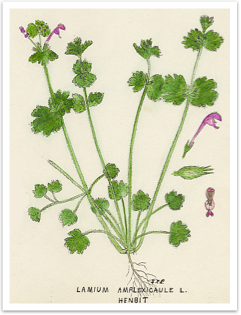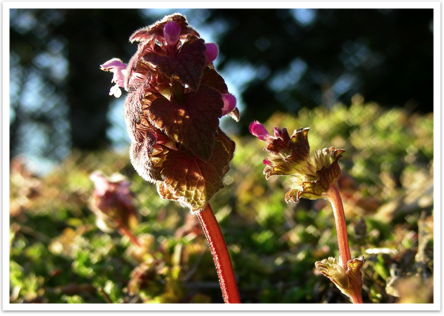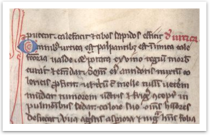Purple Deadnettle and Henbit
These two deadnettles are so called probably because they don’t have the formic acid hairs that make stinging nettle so memorable - in fact, an early Latin name was Urtica iners – inert stinging nettle.
Deadnettles may be invasive weeds, but they’re wildflowers none the less, and the earliest that I photographed this year and last. In Gerard’s Herball (written the same year as Henry the IV), the plant is called ‘Greater Henbit’, that it might be distinguished from the chickweeds that it was grouped with.


Samuel B. Palmer -Biology Dept.
Swarthmore College
Swarthmore College
Samuel B. Palmer
Biology Dept.
Swarthmore College
Biology Dept.
Swarthmore College

Click the image at left to see a description of Deadnettle in a 13th century manuscript; from the University of Victoria (B.C.) online facsmilie.
Though Pliny called the plant Lamium, here it is classed with stinging nettle in Urtica.

Lamium purpureum, L. amplexicaule

Wednesday, April 19, 2006

All of the Palmer Watercolors are courtesy of the Biology Department of Swarthmore College. A searchable database of the images is available through the Swarthmore library’s Triptych site.